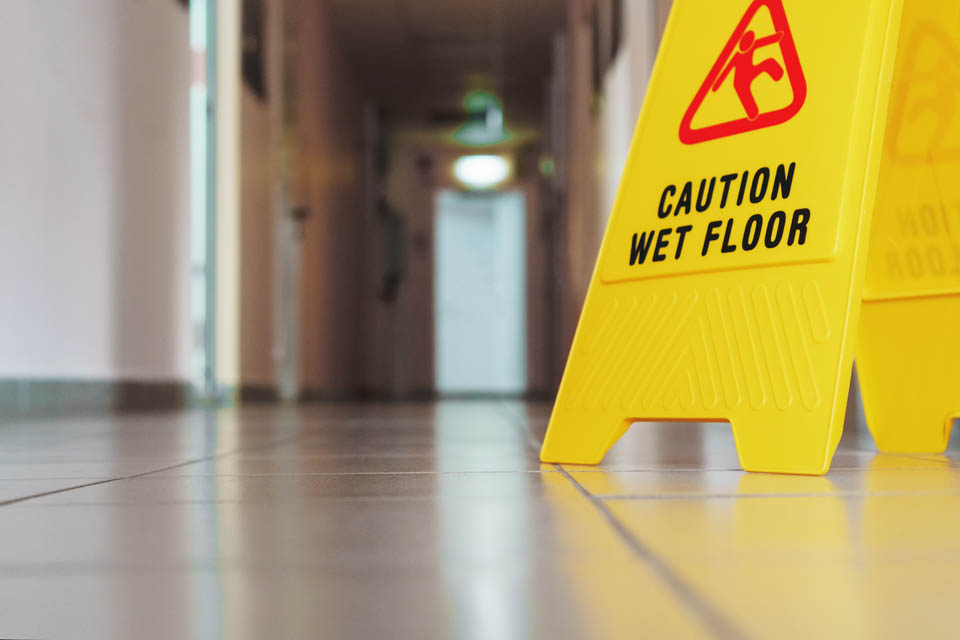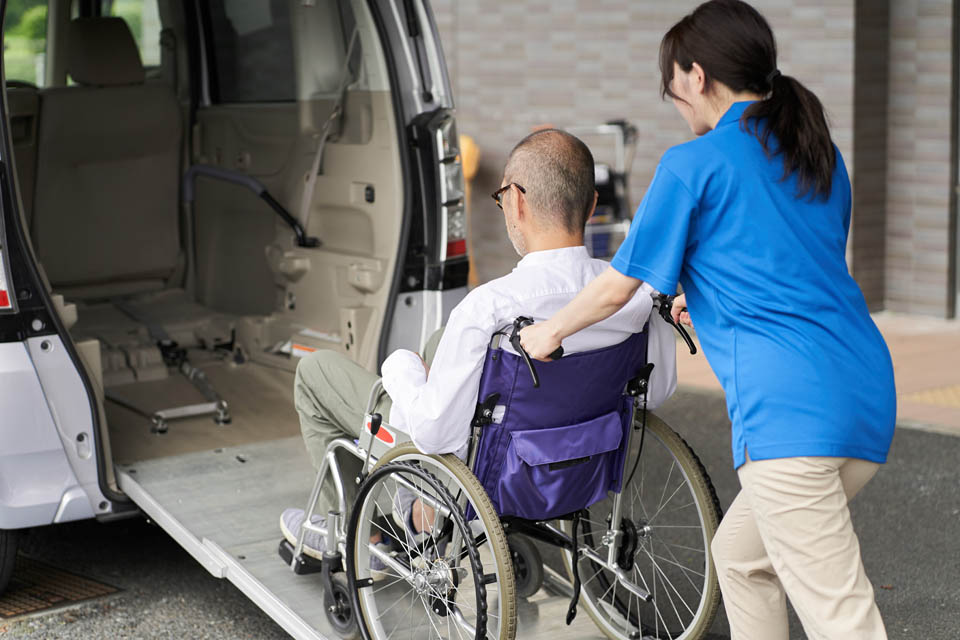The terms ‘hazards’ and ‘risks’ have different meanings, although they both relate to maintaining a safe work environment.

Image by Aleksandr Grechanyuk, Shutterstock, Shutterstock licence
When you understand how hazards and risks impact the work environment, you are alert to possible hazards and understand the level of risk they present.
 Select to learn more
Select to learn more
Select each bar to expand and reveal further information about hazards and risks.
 Check your understanding
Check your understanding
Fill in the blanks by dragging the words into the correct place then select ‘Check’ to see if you are correct.
Responsibilities for identifying hazards
Organisations must provide information to their workers either verbally or in writing about:
- any current hazards
- the actions being taken to rectify them
- the actions required to avoid the hazards.
Workers have a legal obligation to identify, report and record hazards in the workplace. This might be giving feedback to your employer, such as the effectiveness of a new procedure for the correct and safe use of wheelchairs.

Image by mapo_japan, Shutterstock, Shutterstock licence
Identify hazards
Hazard identification is effective when it happens:
- before new types of work begin
- before changes are made to equipment, work processes or work arrangements
- as part of planning major tasks or activities, such as equipment shutdowns
- following an incident report
- when new knowledge becomes available
- at regular intervals during usual operations
- prior to disposal of equipment or materials.
Identifying existing or potential hazards
Workplace hazards are different in every industry and workplace environment. They can include noise, manual handling, radiation (such as laser, welding, etc) and extreme temperatures.
 Select to learn more
Select to learn more
Select each bar to expand and reveal further information about different hazards.
 Case study
Case study
This case study illustrates how hazards can cause harm, even if you think there is a low risk.
Clara starts her shift as a personal assistant in an aged care facility. Clara has to help people in rooms 1 to 4 shower, get dressed, and have breakfast. Her co-worker, Shani, has to do the same with the people in rooms 5 to 8.
As Clara walks over to get clean pyjamas for a resident, she sees a very small pool of water at the end of room 6 in Shani's section.
Clara can see that Shani has her hands full with a client who is confused and needs to be calmed. She considers whether to tell Shani about the water or whether to clean it up herself.
At that moment, one of her own clients, Bill, starts yelling that he needs to go to the bathroom. Clara decides that the pool of water is only small and is unlikely to cause a problem, so she continues with her work.
Two other assistants, Pedro and Cathy, come on duty after lunch. While providing a client from room 6 with a blanket, Cathy slips in the pool of water and falls heavily on the floor. Pedro runs over to help her, and he can see that her arm looks broken.
Later that day, the supervisor asks staff if anyone noticed the pool of water. Clara says that she did but was too busy to clean it up and decided the risk of anyone slipping was low.
 Reflect
Reflect
Reflect on the following questions:
- What action should Clara have taken after seeing the water spill?
- How could this action have prevented Cathy’s injury?
- What actions should the supervisor take to ensure staff understand the policies and procedures for identifying hazards?
Record your thoughts in your digital device or notebook.
Common workplace hazards
There are many different types of common workplace hazards.
 Select to learn more
Select to learn more
Select the items on the image to reveal more information about common workplace hazards.
Image
by Ground
Picture, Shutterstock, Shutterstock
licence
Hazard identification tools
Commonly used tools for identifying hazards in the workplace:
- hazard identification checklists
- risk assessment matrices.
Below is an example of a hazard identification checklist:
| Type of hazard | Tick relevant hazard box | Comment/action taken |
|---|---|---|
| Inadequate lighting | ||
| Appropriate household cleaning equipment | ||
| Manual handling (for example, lifting loads) | ||
| Limited ventilation | ||
| Infectious diseases | ||
| Open wounds/cuts | ||
| Chemicals or medications | ||
| Faulty electrical equipment | ||
| Overloaded power points | ||
| Pets | ||
| Bathroom equipment and supplies | ||
| Loose floor coverings | ||
| Client behaviour (e.g. aggressive behaviours) |
 Apply your skills
Apply your skills
Download the example hazard identification checklist and complete a hazard check of your office, home or other workplace.
Did you find any hazards? Do any need to be reported? Why? Why not?
Here are some other examples of hazard identification checklists from state and territory authorities that can be found online.
Reporting hazards
You must report identified hazards to your employer, including when risk control measures are not adequate or not working.
Organisational policies and procedures will outline the reporting process that must be used, the timeframe for reporting and who to report to.
Designated persons are those people in an organisation who have a formal role to act on WHS hazards and provide support, including:
- team leaders
- supervisors
- health and safety representatives or committee members
- organisation WHS personnel such as safety officers
- managers and supervisors
- other persons designated by the organisation.
 Check your understanding
Check your understanding
Respond to the question below and select ‘Check’ to see if you are correct.
 Record your thoughts
Record your thoughts
Watch the video linked below and document your thoughts to the question presented. When you have finished, select 'Create Document' to export your content and keep for later.
 Check your understanding
Check your understanding
Respond to the question below and select ‘Check’ to see if you are correct.
Background Colour
Font Face
Font Kerning
Font Size
Image Visibility
Letter Spacing
Line Height
Link Highlight
Text Colour